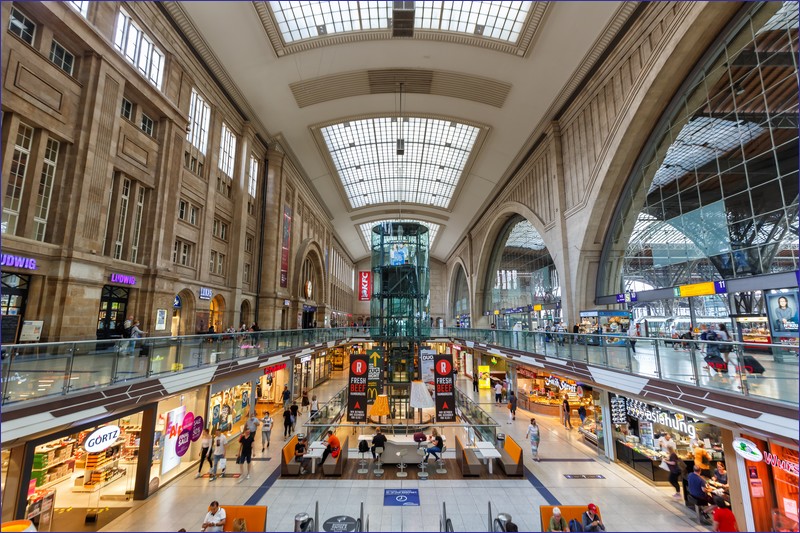Dresden is a city full of historic landmarks and museums that requires several days to explore thoroughly. It also serves as an excellent base for train excursions. Day trips from Dresden by train make it possible to visit the most beautiful places in Saxony and the German-Czech border region. In this article, I’ve listed only the most important destinations that can be reached by regional train from Dresden in no more than two hours. In some cases, a transfer is necessary. In the future, I will try to expand the article with other interesting places.
Direction Zittau
Bautzen – a very charming, relatively small town, highly photogenic in many places. The walk from the railway station to the historic center takes about 10 minutes. The most beautiful spot in Bautzen is the Friedensbrücke bridge over the Spree River, an ideal viewpoint of the Old Town. The medieval city walls with three towers have been preserved. The symbol of the town is the 44-meter-high Old Water Tower (Alte Wasserkunst) with an exhibition of technical devices. The town boasts a beautiful market square with a town hall, and St. Peter’s Cathedral is also worth a visit – it is divided into Catholic and Protestant sections. Other attractions include the Mustard Museum and the Sorbian Museum.
Löbau – a small German town ideal for a short trip. The attractive town center with a beautiful town hall is located close to the railway station, but the main tourist highlight is Löbauer Berg, a 447-meter hill about three kilometers from the center that towers over the town. At the top is the only cast-iron observation tower of its kind in Europe. The tower is notable for its Byzantine-inspired ornamentation.
Görlitz – one of the most beautiful urban ensembles in Germany. A pleasant town for a few hours’ walk among historic sites. You can cross to the much less attractive Polish town of Zgorzelec via a bridge over the Lusatian Neisse or travel there by train. Major landmarks include the parish church of St. Peter and Paul, the town hall, medieval merchant houses (hall houses), and several city towers. The museum offering is relatively modest – the Silesian Museum is worth visiting. A popular destination outside the city center is the zoo, which features a seasonal park railway. A must-visit town.
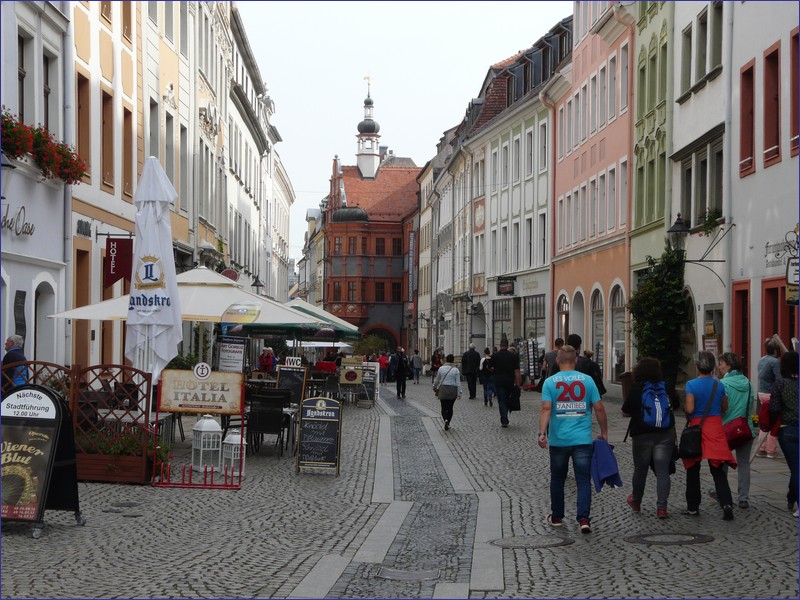
Ostritz (optional) – a sleepy little town. Unusual in that it is served by the Krzewina Zgorzelecka railway station on the Polish side, and the town itself is accessible via a footbridge over the Lusatian Neisse. It features a pretty town square, peace and quiet, a few historic streets, and a well-known monastery located outside the center.
Zittau – a sleepy but charming town, formerly known for producing Robur vehicles. The heart of the city is its main square with an impressive town hall resembling an Italian palace. Zittau’s most valuable monument is the deconsecrated Church of the Holy Cross, which houses the Great Zittau Lenten Veil from 1472. Highly recommended is a ride on the Zittau Narrow-Gauge Railway, using steam engines and retro carriages. The ride to Kurort Oybin or Kurort Jonsdorf is an unforgettable experience. Euro-Nysa ticket holders must pay a surcharge.
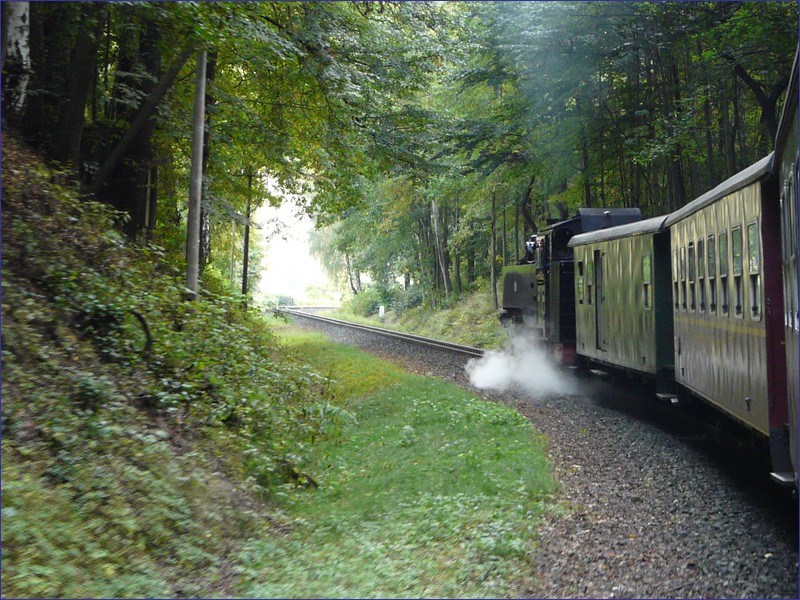
Day trips from Dresden by train – Direction: Děčín
The railway line from Dresden to the Czech town of Děčín runs along the Elbe River, offering beautiful views of the hills and river valley. Both regional and EuroCity trains operate on this route.
Schloss Weesenstein – a castle often called the “pearl in the crown of Saxony.” To reach the castle by train, you need to transfer at Heidenau station. The eight-story palace is a mixture of architectural styles and periods in which it was rebuilt. The oldest preserved part is a round tower built around the year 1300. Inside, you can see richly furnished princely chambers from the 18th and 19th centuries and a collection of priceless wallpapers. The palace also has two chapels of different denominations – one Protestant and one Catholic.
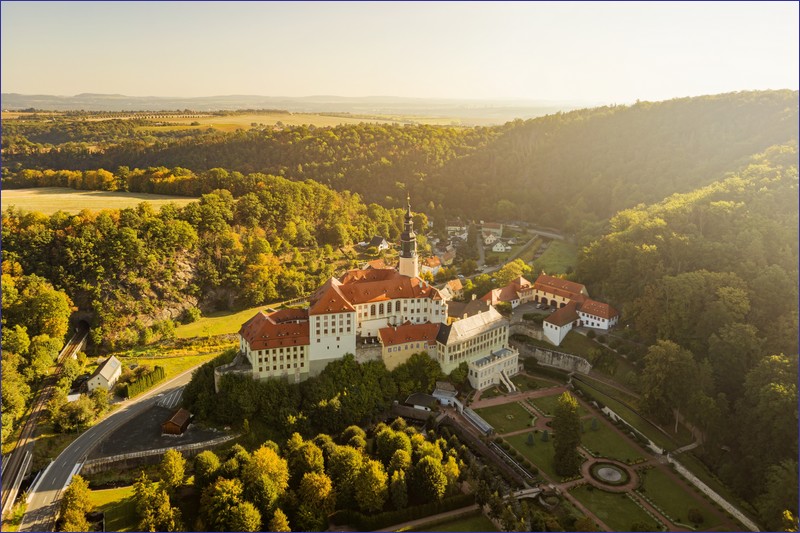
Pirna – a lovely town worth visiting. The Old Town, located on the Elbe, has preserved its grid street layout. Highlights include the Renaissance town hall from the mid-16th century and a late Gothic church with unusual vaults designed by Peter von Ulrich and decorated with paintings by Jobst Dorndorf from 1545–1546. Overlooking the historic town is Fortress Sonnenstein, below which you’ll find scenic views of vineyard-covered slopes and the former suburb of Schifftorvorstadt, the oldest district of Pirna. The town’s market square was immortalized on canvas by the Venetian painter Bernardo Bellotto, known as “Canaletto.” Every year, many locals gather in the square to reenact the scene captured in the painting.
Kurort Rathen – from the train station, a trail leads to the most famous attraction in Saxon Switzerland: the stunning Bastei rock formation with its bridge and castle ruins.
Königstein – a mighty fortress towering over the Elbe, built in the second half of the 16th century on the site of a medieval castle. This unique complex of over 50 impressive structures draws tourists with breathtaking views of the surrounding Elbe Sandstone Mountains.
Bad Schandau – a picturesque spa town on the Elbe. An excellent starting point for hiking in Saxon Switzerland. The town’s main attraction is the Kirnitzschtalbahn tram – the only tram line in Germany located within a national park. The town is easily visible from train windows.
Bohemian Switzerland – passengers alighting at Schöna station can take a ferry across the river to the Czech town of Hřensko, from where many trails lead to the main attractions of Bohemian Switzerland, including the remarkable rock formation Pravčická brána, which can be admired from several nearby viewing platforms.
Děčín (optional) – an average Czech town. The railway station is located about 1.5 kilometers from the town center, but buses are available. In the center, you can visit a castle converted into a museum and the Church of the Exaltation of the Holy Cross. Closer to the station, on a rocky hill above the town, lies a zoo.
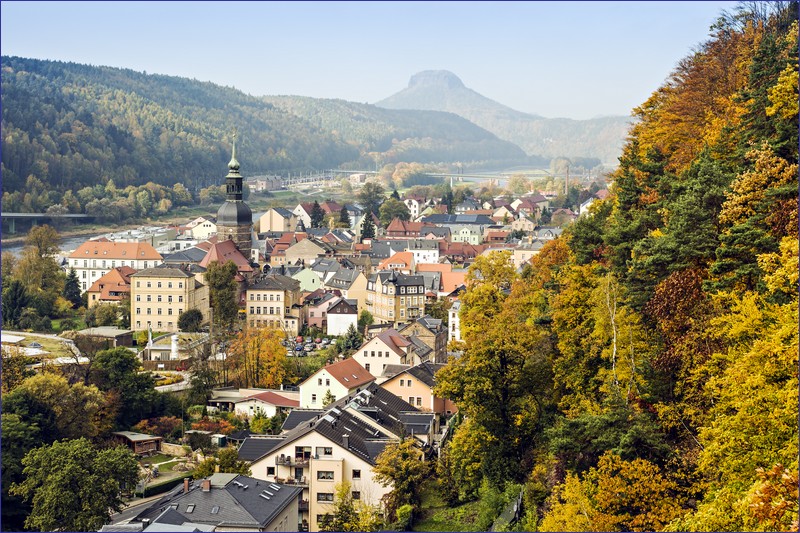
Direction: Meissen
Radebeul – a town known for its long tradition of viticulture, surrounded by gently rolling hills lush with vineyards. The most popular attractions include Wackerbarth Palace, built in the early 18th century on the orders of Augustus Christoph, Count of Wackerbarth. Once a symbol of luxury, the palace hosted lavish receptions for influential rulers, including King Augustus the Strong. Radebeul is also the starting point of the Lößnitzgrundbahn narrow-gauge railway line, which connects the stations Radebeul Ost and Radeburg (16.6 km). The trains are made up of steam locomotives and vintage-style carriages. Another highlight of Radebeul is the museum dedicated to the famous writer Karl May.
Moritzburg – located along the Radebeul Ost – Radeburg narrow-gauge railway (a transfer from the S1 train from Dresden is required), the town is renowned for its beautiful water palace set by a pond. The palace was built in the 18th century when Augustus the Strong ordered the reconstruction of a royal residence near Dresden into a hunting lodge, where he held many extravagant parties. Tourists can see exquisite furniture and silverware made in Augsburg, inspired by the Versailles furniture of Louis XVI. The tour route leads through valuable collections of Chinese, Japanese, and Meissen porcelain. Noteworthy exhibits include preserved paintings by Lucas Cranach.
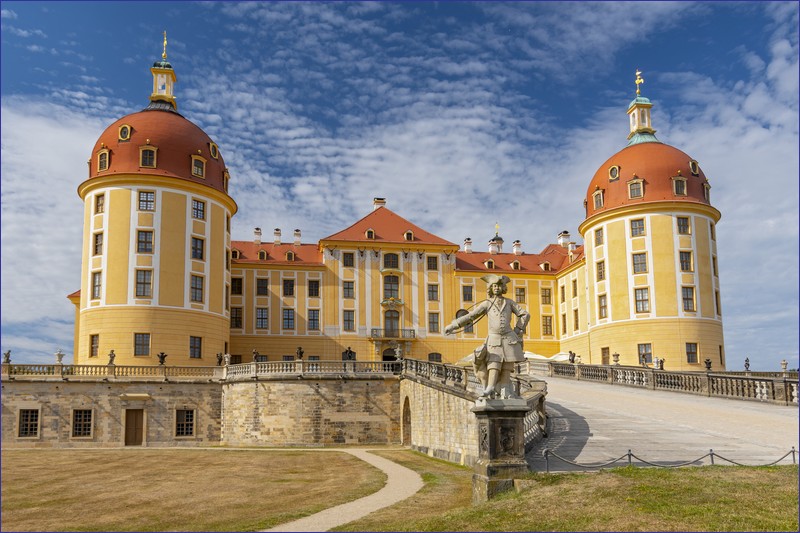
Meissen – a very charming town known for its porcelain production. One of the oldest towns in Saxony, its history dates back to the early 10th century. The most important landmark is Albrechtsburg Castle, majestically perched above the Elbe River. Also worth visiting is the Gothic cathedral, located on the castle hill. Visitors should not miss the City Museum and the famous Porcelain Museum.
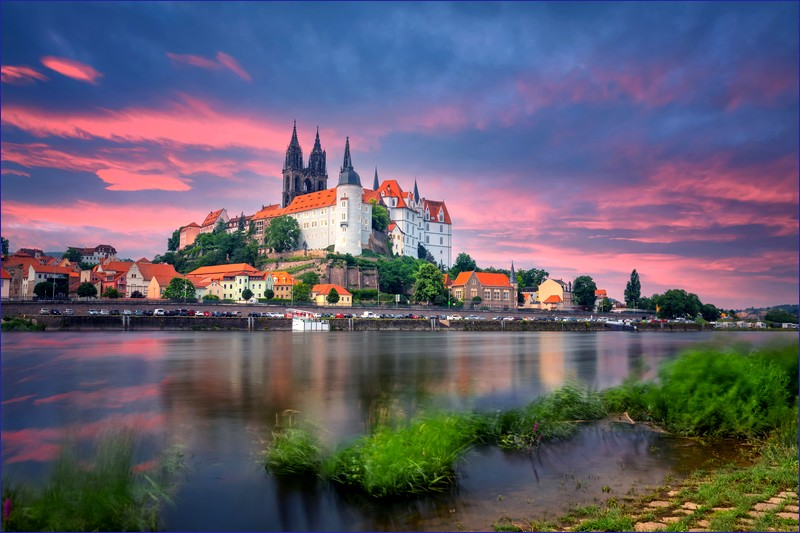
Direction: Leipzig and Torgau
Oschatz (optional) – a surprisingly charming small town. It is the starting station of the popular Döllnitzbahn narrow-gauge railway, which operates year-round (usually with diesel locomotives, but with steam engines on selected weekends). The Old Town has been renovated, and it’s worth climbing the tower of St. Aegidien Church for panoramic views of the town and surrounding countryside.
Wurzen (optional) – a small town that is worth a visit, though it can also be skipped. The center features preserved Renaissance and Baroque buildings, as well as houses with richly decorated Art Nouveau façades. The Marien Cathedral is particularly attractive, and the adjacent castle—once a residence of the bishops of Meissen—has been converted into a hotel and restaurant. The town is surrounded by extensive forests and river meadows that are home to many rare plant and animal species.
Leipzig – a city that was heavily bombed during World War II, with only part of its historic architecture remaining. Leipzig Hauptbahnhof is one of the largest and most beautiful train stations in Europe. The main attractions of this large city are located on or near Augustusplatz. The famous Gewandhaus Orchestra is housed in the Philharmonic Hall, next to which stands the Opera House. Nearby is Leipzig’s tallest high-rise, Panorama Tower, which also serves as a viewing platform. In the Old Town, the Old Town Hall houses a museum dedicated to Leipzig’s history. Other highlights include the ornate historic shopping arcades, St. Thomas Church, St. Nicholas Church, and the New Town Hall. Outside the city center rises the impressive Monument to the Battle of the Nations. Leipzig is also home to one of the oldest zoos in Europe and is known for its green spaces and extensive network of cycling routes.
Torgau – a relatively small town with a fascinating history and preserved 16th-century architecture. It is advertised as one of the most beautiful Renaissance towns in Germany. On the main square, you’ll find a 16th-century town hall, a fountain, and one of Germany’s oldest pharmacies. Nearby is the country’s oldest toy store, Carl Loebner. The town center is characterized by narrow streets. A visit to Hartenfels Castle, built in the 15th century for the Saxon Electors of the House of Wettin, is a must. The castle chapel, opened by Martin Luther in 1544, was the first Protestant church in Germany.
Related articles:
Train travel in Germany – a comprehensive guide
Trains between Germany and the Czech Republic
